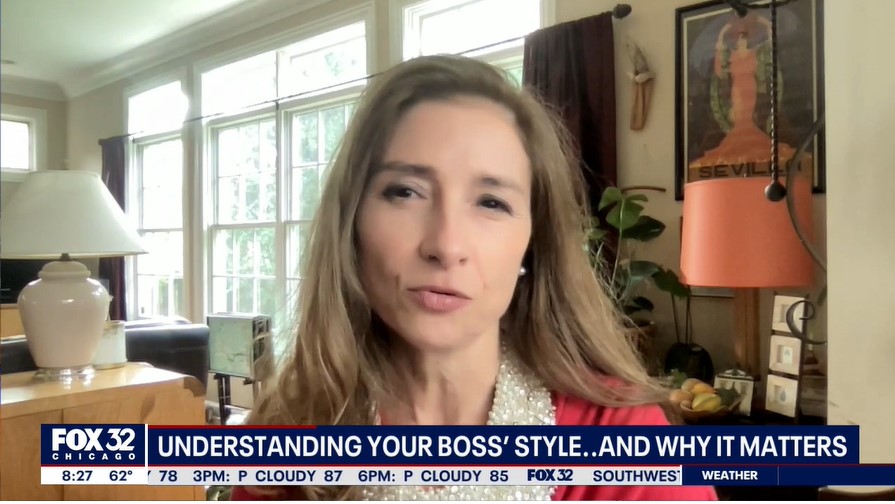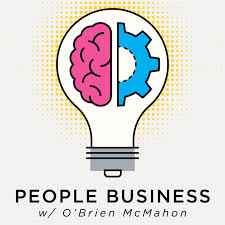I spoke with Fox 32 Chicago to break down several less-than-effective leadership styles and how employees can best mesh inside the workplace.

I spoke with Fox 32 Chicago to break down several less-than-effective leadership styles and how employees can best mesh inside the workplace.

Jennifer joined John Baldoni on LinkedIn Live for GRACE under Pressure, where he interviews thought leaders and doers whose ideas and actions are helping us come to a greater understanding of ourselves and the greater opportunities that await us.
You can listen to this podcast on YouTube, Spotify or Apple Podcasts.
Post mergers & acquisitions (M&A) onboarding is NOT your typical onboarding journey. However, intentional planning and appreciation for your new employees’ mindset can play a critical role in setting your new employees up for success.
In an M&A scenario, employees have not been actively recruited to join your company. The excitement and eagerness to “be part of the team” are not typically there. In fact, if the newly acquired company will be changing its name to the acquiring company, these new employees may even think about revolting. This reality requires a different mindset and approach as you onboard your employees.
Read all 5 best practices in my guest article for Silk Road Technologies.
December 3, 2020

https://www.middlemarketcenter.org/podcasts/the-pandemic-playbookLeaning on her deep understanding of companies in transition, Jennifer Fondrevay joins Doug Farren and the National Center for the Middle Market to share what business leaders have done to lead their organizations through COVID-19 and the uncertainty of 2020, and how these lessons can help others grow.
June 23, 2020

On Humanizing Mergers & Acquisitions
WITH O’BRIEN MCMAHON
Jennifer and O’Brien McMahon discuss how forward-thinking business leaders, owners, and executives can prepare for the human capital challenges of M&A transactions.
A Few highlights of my conversation with O’Brien:
19:05 “How should leaders be thinking about the people side of business transitions or mergers or acquisitions”
20:25 How to be prepared for your organization to go through stages of grief? What are the stages?
25:35 Why is preparation for the “stages of grief” so often overlooked by executives/leaders?”
28:40 Why the fact that grief isn’t typically discussed in business can be harmful.
30:40 Why getting to Acceptance is important to your career and your health (mental AND physical)
31:30 Is there a way to speed up the grieving process?
September 2019

Jennifer Fondrevay joins Alexandra Levit to explore Mergers & Acquisitions and its effect on the Workforce. Jennifer works with forward-thinking business leaders, owners and executives to pre-plan their people strategy through the phases of M&A so their employees can contribute from Day1.

Deal success can hinge on how companies address human capital as they plan and execute an M&A transaction, according to panelists at a recent ACG Detroit event who discussed how to mitigate blind spots, prepare for the unexpected, and look beyond financials.
The chapter’s November lunch and learn program, titled “Uncovering the Blindspots of the M&A Deal Journey,” also explored cultural challenges, including the “us v. them” dynamic that can arise after an acquisition, and how to retain talent after a deal closes.
I served as moderator for the discussion, which featured three executives from the Detroit area who offered perspectives from private equity, investment banking and consulting. They included Emily Murto, vice president of private equity firm Stratford-Cambridge Group; Ellen Clark, managing director of M&A advisory firm Greenwich Capital Group; and Dan Ellis, director of Townsend Search Group, an executive search and consulting firm.
Below are insights from the panelists. (Comments have been condensed for clarity).
Avoid blind spots by considering the people, getting alignment, being prepared and establishing clear expectations
Jennifer Fondrevay: As a C-Suite marketing executive, I experienced three separate multi-billion dollar acquisitions. I determined there had to be a better way of managing the people aspect. The research I conducted over 2 ½ years with executives from all sides of the M&A deal equation confirmed the “unexpected people problems” often cited for deal failure can be expected. Pre-planning your organizational structure and people strategy at the very early stages will set your workforce up for success and accelerate their productivity.
Ellen Clark: One of my biggest challenges is making sure the shareholders’ expectations are correct and aligned, and making sure they are truly ready to sell the business. The other is making sure they are prepared for the process. I set expectations up front that they must remain engaged throughout—it’s not going to be easy. We spend a lot of time up front getting ready, prepping the management team so they’re not lost in the conversation. Everyone becomes fixated on the finish line and we always try to slow them down.
Emily Murto: For a lot of the management teams who are selling a business, this is the first time they have gone through this transaction. I try to be mindful of what is the easiest way for them to answer questions to make sure they are accurate and true, while being mindful that the management team may not have signed up for this.
Dan Ellis: For me [as an executive recruiter] it’s about utilizing all of your service providers to really hone in on exactly what you are looking for, and being clear on expectations. Any time executives feel like they can do it all themselves, that they are the expert in order to save a buck, that is the quickest route to failure.
EMILY MURTO
Vice President, Stratford-Cambridge Group
“People” challenges can be minimized through pre-planning and defining a strategy across organizational layers
DE: Any time you introduce someone new to the business, it’s like an organ transplant: The organ may get rejected. You need to make sure that you’re staying ahead and helping to create expectations of what the role is. Define the role and define what everybody’s thoughts are on the role.
EC: You need to have alignment. I advise my sellers to ask questions, especially when talking about selling to private equity. It’s more than just dollars and cents. It’s so important that there is a culture fit. I encourage the seller to talk to others to get perspective. If it all falls apart afterwards and the company, the culture, the legacy is destroyed, then it’s just not worth it.
JF: The team you have in place may not be the team that’s going to get you to the next level. That is a tough decision. Compassion equally means being smart about the value of the people. How can that team and those individuals contribute in other ways? How can we leverage their value and not lose their expertise?
EM: What you’re really investing in when you buy a business is the people. It’s sometimes a matter of just trying to find the right role for them. An individual might have great things to contribute and just be in the wrong seat. We had an individual who had grown the business tremendously, but we knew he probably didn’t have all the capabilities needed to lead the new team going forward. We benefited from his expertise by moving him to another seat on the bus and bringing on another individual to lead.
DE: If you are not going down another layer deep you may not be aware of what’s really going on. We were involved with a confidential replacement because the company had promoted a general manager who was a toxic leader. If only the sponsor had spent more time with the organization and really talked with the people. The more people we can get involved in the organization, the better it is because we look for disconnects.
You can’t anticipate human behavior, but you should be prepared for people to transition
JF: My book highlights that when people operate from a position of fear, they change. You can expect them to act one way in one scenario, but when operating from a position of fear, all bets are off. I encourage executives to conduct a pre-mortem to consider all of the ways a decision could go wrong.
EC: It’s something I refer to as Stockholm syndrome: when a kidnapped person suddenly has compassion for their captors. In an M&A transaction, there is a shifting of loyalties. The management team will realize that the person they have seen as the enemy is going to be paying their paycheck when the transaction closes. The owner of the business selling doesn’t anticipate this. That’s why we spend so much time up front. That keeps the leverage in the hands of the selling shareholder so they’re not beholden to the individuals who have now gone over to the other side.
To hear highlights from the discussion, check out the recording of the “Uncovering the Blindspots of the M&A Deal Journey” panel.